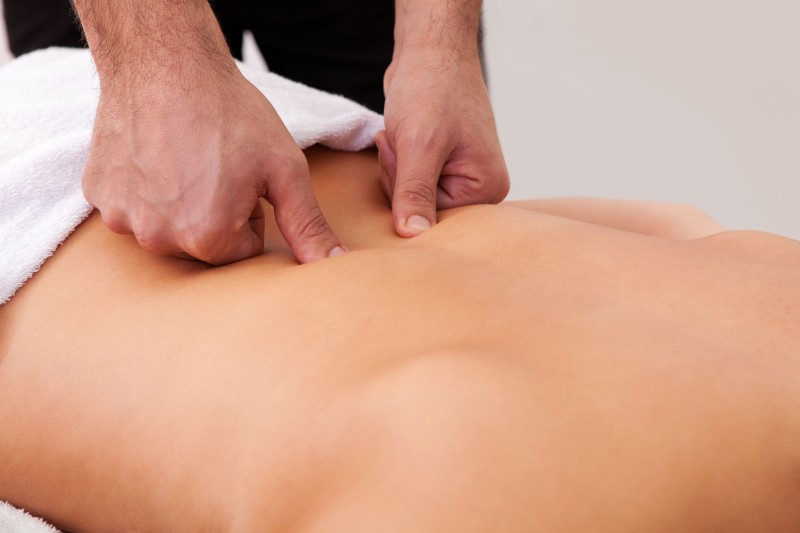Degenerative disc disease (DDD) is a common condition that affects the spine, particularly as people age. It occurs when the intervertebral discs, which act as cushions between the vertebrae, begin to break down and lose their ability to absorb shock. This can lead to pain, stiffness, and reduced mobility.
For many individuals dealing with DDD, spinal decompression therapy offers a non-invasive solution to alleviate pain and promote healing.
What is Degenerative Disc Disease?
Degenerative disc disease is a condition where the intervertebral discs in the spine deteriorate or break down over time. These discs are responsible for cushioning the vertebrae and allowing flexibility in the spine. When the discs lose hydration, elasticity, and structural integrity, they can cause a variety of symptoms, including:
- Chronic back pain
- Numbness or tingling in the legs
- Muscle weakness
- Limited range of motion
- Pain that worsens with movement or prolonged sitting
DDD can occur due to natural aging processes, injury, or repetitive stress on the spine. The condition is most commonly seen in the cervical (neck) and lumbar (lower back) regions of the spine, though it can affect any part of the spine.
Risk Factors for Degenerative Disc Disease
Several factors can increase the risk of developing degenerative disc disease, including:
- Age: The discs lose hydration and elasticity with age, making them more prone to degeneration.
- Genetics: Some individuals may be genetically predisposed to disc degeneration.
- Injury: Past spinal injuries or trauma can accelerate the breakdown of the discs.
- Occupation: Jobs that involve heavy lifting, twisting, or prolonged sitting may put extra strain on the spine.
- Obesity: Excess weight can place added pressure on the discs, contributing to degeneration.
While DDD is a common part of the aging process, it can still be managed effectively with proper treatment, such as spinal decompression therapy and spinal adjustments.
What is Spinal Decompression Therapy?
Spinal decompression therapy is a non-surgical treatment designed to relieve pressure on the spine and its discs. This therapy works by gently stretching the spine, creating negative pressure within the discs. This negative pressure helps to draw the herniated disc material back into place and increases the space between the vertebrae. By doing so, spinal decompression therapy can relieve nerve compression, reduce pain, and promote healing.
Spinal decompression therapy is often used to treat a variety of spinal conditions, including herniated discs, sciatica, and degenerative disc disease. The treatment is typically performed using a specialized mechanical traction device that applies controlled force to the spine. The goal is to create more space between the vertebrae and relieve pressure on the discs, which can help alleviate the symptoms associated with DDD.
How Spinal Decompression Helps with Degenerative Disc Disease
Spinal decompression therapy is an effective treatment for degenerative disc disease because it directly addresses the root cause of the pain — pressure on the discs and nerves. Here’s how spinal decompression helps:
1. Reducing Pressure on the Discs and Nerve Roots
The primary benefit of spinal decompression therapy is its ability to relieve pressure on the intervertebral discs and nerve roots. When the discs lose their ability to absorb shock, the vertebrae can compress the nerves, leading to pain, numbness, and weakness. By stretching the spine and creating negative pressure within the discs, spinal decompression helps alleviate this pressure, reducing symptoms.
2. Improving Blood Flow and Healing
Spinal decompression therapy increases blood flow to the affected areas of the spine, which can help promote the healing of damaged discs and tissues. The increased circulation delivers oxygen and nutrients to the spinal discs, encouraging regeneration and repair. For individuals with degenerative disc disease, this enhanced blood flow can lead to a reduction in pain and inflammation, as well as improved disc health over time.
3. Rehydrating the Discs
Over time, the intervertebral discs lose hydration, which makes them less effective at absorbing shock. Spinal decompression helps rehydrate the discs by creating a vacuum effect, which encourages the absorption of water, nutrients, and other fluids back into the discs. This rehydration process can help restore the discs’ natural shape and function, reducing pain and discomfort.
4. Promoting Long-Term Pain Relief
For individuals with degenerative disc disease, the relief provided by spinal decompression therapy can be long-lasting. As the therapy helps to heal and regenerate the discs, it can prevent further degeneration and reduce the risk of additional spinal issues. By improving the alignment of the spine and decompressing the discs, spinal decompression can help individuals maintain a healthy spine for years to come.
The Role of Spinal Adjustments in Treating Degenerative Disc Disease
Spinal adjustments, also known as spinal manipulation, are another important treatment for degenerative disc disease. This technique involves manually adjusting the spine to restore proper alignment and reduce nerve irritation.
1. Restoring Spinal Alignment
Spinal adjustments help restore proper alignment to the vertebrae, which is essential for relieving pressure on the discs and nerves. When the spine is misaligned, it can exacerbate the symptoms of DDD. Spinal adjustments help to realign the vertebrae, improving spinal function and reducing nerve compression.
2. Reducing Pain and Inflammation
Just like spinal decompression therapy, spinal adjustments help reduce inflammation and pain caused by nerve compression. By improving spinal mobility and flexibility, spinal adjustments can alleviate discomfort and improve the overall function of the spine.
3. Enhancing Nervous System Function
Proper spinal alignment is essential for optimal nervous system function. When the spine is misaligned, it can interfere with nerve function, leading to pain and discomfort. Spinal adjustments help enhance nerve function by ensuring that the vertebrae are properly aligned, which can provide long-term relief from the symptoms of DDD.
Combining Spinal Decompression and Spinal Adjustments for Optimal Relief
Spinal decompression therapy and spinal adjustments work well together as complementary treatments for degenerative disc disease. While spinal decompression focuses on relieving pressure on the discs and nerve roots, spinal adjustments address spinal misalignment and improve overall spinal health. By combining these therapies, individuals with DDD can experience greater pain relief, improved mobility, and a better quality of life.
To learn more about how spinal decompression therapy and spinal adjustments can help with degenerative disc disease, visit South Florida Health Institute.
Get Started with Spinal Decompression Therapy Today
If you’re suffering from degenerative disc disease, spinal decompression therapy may be the solution you’ve been looking for. This non-invasive treatment can provide relief from pain, reduce inflammation, and help improve spinal health.

